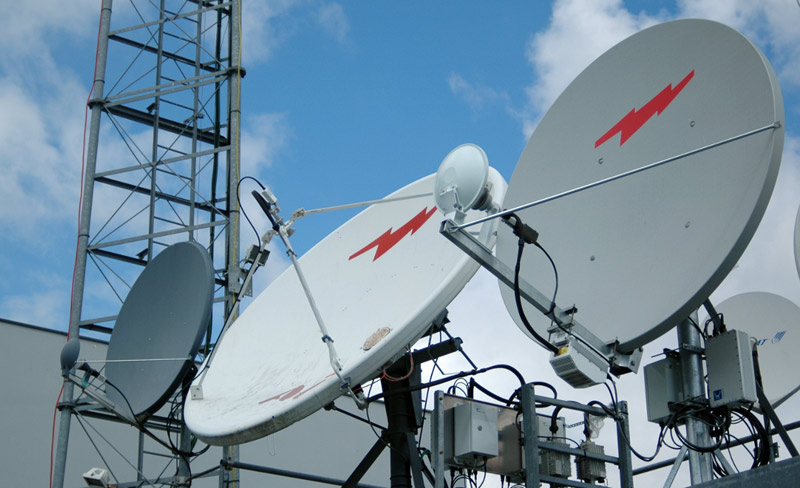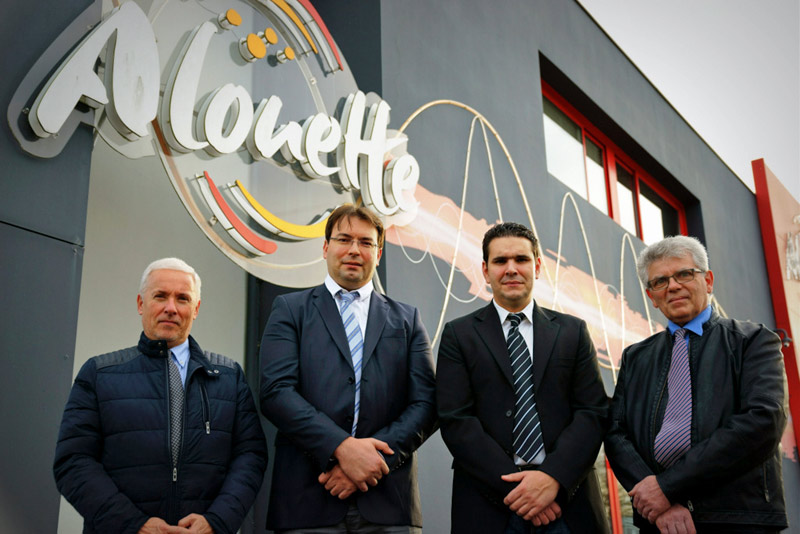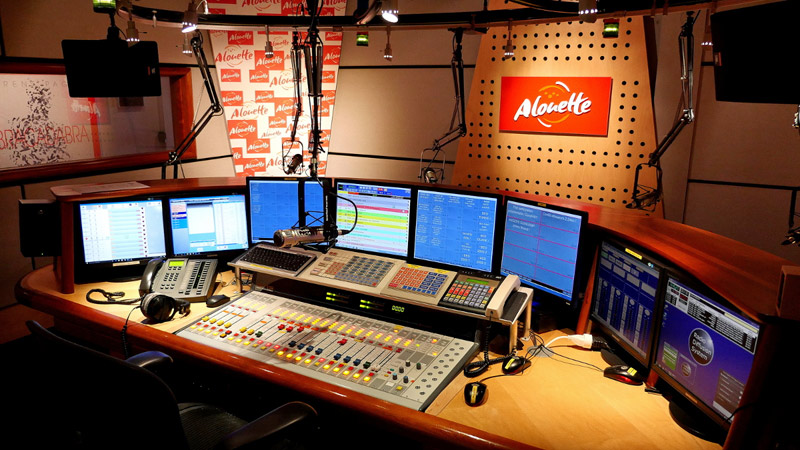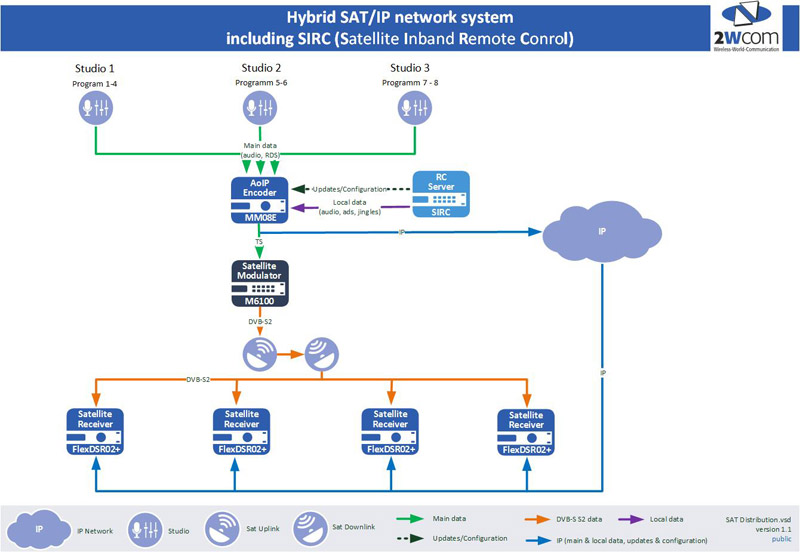Radio Alouette

Alouette is the leader in regional radio in France and also the largest and most popular broadcaster in its western region. Operating 43 of its own frequencies, Alouette now covers 15 local departments. The key to its success is its regional focus and its closeness to its listeners. Alouette is known for its wide variety of popular formats and a smart, prudent use of cutting-edge technology.
Based in Herbiers, Vendée since 1981, and named after the Mont des Alouettes – a peak that has been legendary since the time of the Gauls – Alouette quickly expanded into a genuine regional network.
Alouette’s technical decisions are in line with its family spirit, which has driven the station’s success: “We make our decisions internally, after consulting with our technical and human resources teams, and we always meet with the manufacturers on our own premises,” says Frédéric Bourgeais.

In 2017, satellite transmission will undergo a monumental change. We will be switching from one proprietary standard to a new one, DVB S2, which is more open and designed to be interoperable with all current and future media protocols, whether satellite-based or IP-based.
We had four major goals in mind for the new system technology:
- Best possible flexibility regarding transmission sources and coding algorithm.
- Keeping technology as simple and cost-efficient as possible.
- Optimize quality by using a well-constructed redundancy concept.
- A solution tailored to the requirements of regional broadcasting.
Frederic Bourgeais further explaining: ”Since 1996, Alouette has been managing its own MCPC satellite uplink with its partner in the space segment, Globecast – Eutelsat. That is the main reason why we are not participating in the NSTR project for the change to DVB-S2 standard, which is a merger of several French broadcasters using a common satellite uplink.
Although we didn't need access to the NSTR satellite uplink, our Alouette engineers were very interested why the NSTR project team had chosen a system solution from 2wcom and also interested in their experiences with this system. The positive feedback from the NSTR team in combination with the visit of Werner Drews (CEO of 2wcom) in the summer of 2016 – and a competitive bid – were the main reasons why the DVB-S2 project team of Alouette chose to work with the German company 2wcom.
From the beginning, cooperation between the sales teams and the engineers of both companies has been based on respect and trust. As a result we have had a very productive collaboration from the outset of this project. We quickly understood that their professional and high-quality products are keeping pace with our needs as a broadcaster with a strong regional orientation. As a further stroke of good luck for us, 2wcom was just designing its own eight channel audio MPEG encoder MM08E. The main differences between this encoder and the devices of alternative manufacturers that we reviewed was cost-efficiency and simplicity of configuration.

To ensure an unproblematic switchover to the DVB-S2 standard we started a test phase during February 2017. For this purpose we got one of each device that was going to be part of our new system and I and my technical team had a very close look at all of the functions and interoperability with our system on-site. This was particularly important with regards to one of our main requirements – the broadcasting of local content. Let me try to explain why the chosen equipment was a perfect fit for our requirements.
We got the very first manufactured device of the new product MM08E at our station and have been in lively dialogue with 2wcom engineers regarding our testing results. The MPEG encoder can be very flexibly used in IP and SAT system environments. The product also offers us a wide selection of excellent-quality codecs (Enhanced apt-X, AAC, MPEG I/II Layer 2/3, PCM) as well as RDS data. It generates multiple streams independently.
Transmission of ancillary data and switching contact information (GPIO) can be forwarded via integrated interfaces. In case we need more hardware channels, activation can be managed easily and conveniently via software update. It offers us a well-constructed redundancy concept including two hot swapping slide-in power supplies ensuring operation without interruption. After several weeks working intensively with the device we have been impressed how dependably this prototype runs. Our technical staff came to the conclusion that the device is a very complete and competitively priced product, which is rounded out by offering functions for quality management (MPEG FEC and DualStreaming to avoid IP packet losses), controlling (HTTP, Telnet, NMS and SNMP) and monitoring (IP and MPEG parameters via SNMP v2c and relay, headphone output and alarm, source switch & event logging).
Combined with the eSIRC Server and its DSR02+ receivers this homogeneous global solution enables us to distribute and broadcast local programs and fully control the entire channel with a satellite IP solution. With 2wcom eSIRC (Satellite Inband Remote Control) we chose a web based software for remote control, that precisely meet our needs for comfort at daily work, cost reduction and economy of time.
Equipping FlexDSR02+ with SIRC option and an SD card makes it possible to use the whole range of enhanced functions of eSIRC. As a result, our technicians are able to completely access eSIRC management system via web interface from any computer within the network for uploading data files to the internal memory of integrated FlexDSR02+ receivers (such as firmware, audio, reports and configuration). This, not only for immediate use with an up-time very close to 100%, but also for broadcasting content at a later point of time. All content stored on internal memory of remote devices is mirrored within the eSIRC. Therefore our network operators can always track the state of internal memory on all integrated devices without the need for a physical connection. If a certain file is scheduled to be uploaded, it will also be stored in the local mirror of the concerned device. As storage space of each device is accessible via web interface and also via FTP (see Figure 1) we are able to upload files directly to the system via FTP for distribution via satellite. In case greater volume of data have to be processed and there is no satellite capacity left for it, we have also the possibility to synchronize content stored on the internal memory cards with the eSIRC mirror by using FTP.

Right now we have 38 industrial computers on each of the sites to manage the local news. They receive daily content and programming specific for every city. They are connected by an ADSL line to our master server situated in the head office. Our self-developed software allows every computer to be started in sequence by one or several contact relays coming from our current satellite receiver and encoding audio signals in different formats like MPEG II Layer I to MP3 and AAC. This technology is reliable, but requires regular maintenance.
Numerous kilometers of optical fiber have to be checked at least once a year.
Remembering Alouette covers a large area in the west of France we did not wish to use only a terrestrial IP technology but also optimize guarantees in terms of availability by using satellite. Some towns in our coverage area simply do not have enough ADSL quality.
For obvious financial reasons, we quickly chose a hybrid product that would allow us to manage 43 FM frequencies effectively. So we looked for a device that would allow us to remove all the computers, audio commutators and so on at each site. After evaluating a range of possible products we choose the FlexDSR02+ satellite receivers to handle transport streams via satellite (DVB-S/S2), ASI input and IP, while also managing elementary audio streams and Icecast streams via IP.
As the device is able to process all common coding algorithms like Eapt-X, AAC, MPEG I/II Layer 2/3 or PCM it matches perfectly with one of our major aims - flexibility. Regarding our quality requirements, this multipurpose device offers us a sophisticated concept for audio quality and redundancy options like Pro-MPEG FEC and DualStreaming to avoid IP packet losses. It also includes a very effective link redundancy between the satellite and terrestrial IP by providing advanced functions making it possible to pass over automatically from a satellite reception in one flow to a global TS-IP.

During the entire concept phase and testing we also had the chance to check the quality of 2wcom's customer service. Because of the new system's importance to us for the present and the future this was a crucial question for us. Apart from all of the technical features, one of our most important requirements for us is a constructive and respectful relationship between the engineers of Alouette and 2wcom. To this end, it was key to us that the people involved could work quickly and efficiently together to interface our Zenon Media computerized broadcast systems with 2wcom’s broadcast solutions. For the final realization of switchover to DVB-S2, at least three encoder MM08 will be deployed in the technical room as well as one eSIRC Server and 38 DSR02+ satellite receivers.
This major switchover involving 43 pieces of receiving equipment has already started and will be finished by September 2017. Our internal structure will ultimately enable us to multiplex three programs at once, for a start. Alouette manages 16 frequencies of its own; the other 27 are divided between Towercast and TDF.
What makes Alouette special is that over the years, it has retained its powerful sense of family and team spirit – supported by a chief executive whom the entire staff appreciates – and that it makes wise technological choices. There is no doubt that this human element makes the broadcast offerings brighter, with warm, lively programs that delight western France and ensure that Alouette will remain one of the most vital broadcasters in the nation.”
 How to resolve AdBlock issue?
How to resolve AdBlock issue?